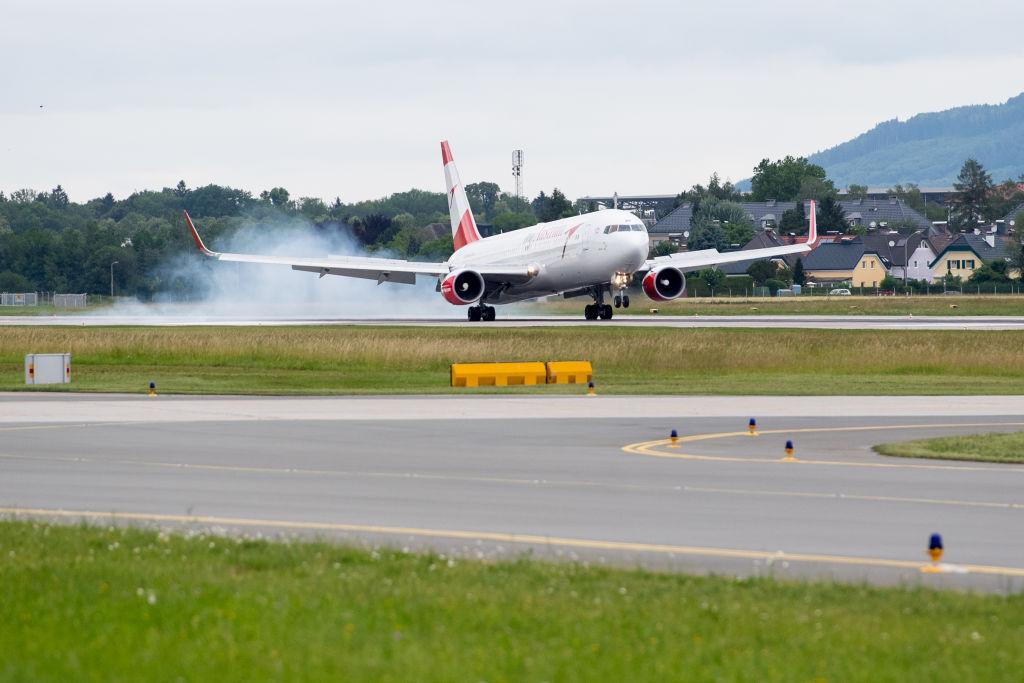
Aviation is going through a major reset. How is this playing out for regional airports like SZG?
Regional airports are fighting very hard with their backs against the wall. Of course, the situation depends individually on where the airport is located and how business was before the pandemic.
Some regional airports have been filing for insolvency. Others have successfully averted insolvency again, such as Paderborn Lippstadt Airport.
Still, I think there is more to come. There was quite a lot of financial help for airlines. Airports, especially in Europe, mostly went without any state support, apart from short-term work and some smaller financial aid, such as investment support.
The support given was mostly for the big airports, but again not everywhere. That leads to an imbalance, especially in terms of competition. The German airports rescue package was only for the defined system-relevant ones. That left airports like Rostock Laage without this help.
Are there too many airports in some markets, for example in Germany?
There is a high density, but whether there are too many airports is a matter of perspective. From a regional perspective, there are not too many airports.
The number one task of a regional airports is to support the region, in terms of tourism, the economy, and to establish good and strong connections to the world. And not all regions are well connected.
Whether all regions can achieve that, and whether their financial power will be enough, I cannot say. In the case of Salzburg, for example, we are located within one of the richest regions of Europe, and the airport itself benefits not only from tourism but also from the many companies that are located in Salzburg thanks to the availability of air connectivity.
Will some regional airports lose this connectivity with many airlines still in survival mode?
Yes, but I believe no two regional airports are the same. This also depends on their strategy.
If the strategy is growth by volume at any price, this has an impact on the price structure. There are some airports which are only focusing on LCCs and looking for growth with them, but our airport is focused on the quality of served destinations and the airlines serving those destinations.
We need the right airline at the right time with the right aircraft size. We did a lot of market research; you don't have to develop a two million passenger airport into a five million capacity one.
The important destinations for us are main hubs to offer global connections and direct flights to the most relevant destinations needed within our region.
How difficult has marketing to airlines become?
The work has not become more difficult. A good connection to your clients counts, to be persistent, and to offer well-prepared data and facts.
But the airlines also must decide on whether they want the cheapest airport, or an airport where they can achieve sustainable load factors.
Of course the fight to reach an airline agreement is getting more intense and the craziest remuneration models are being invented. Nevertheless, it is important that you have good connectivity where the passenger is willing to pay a bit more for the ticket.
Not everyone wants to start the journey from a big hub.
Do you think that smaller airports can benefit from the pandemic because of their size?
This is a more temporary situation—what matters is the right connectivity.
But the short distance from these airports is important. Smaller airports are more than infrastructure, they have become more of a service provider.
Many airlines do not have their own staff anymore at these airports. We have taken over this role. We know the home market best and we can say which kind of marketing would be useful. We also can connect them to the local political and economic markets, which in a big airport is neither easily possible nor necessary.
All airports implemented cost cutting measures during the pandemic. How challenging is it to increase capacity and workload at the airport again?
Very difficult. To downsize operations was painful, but we know how to do crisis management.
To start-up again, for employees after 18 months of reduced work, we need to relearn processes such as handling aircraft.
This is a time where we must be aware of avoiding damage to equipment or aircraft until we regain the necessary ‘muscle memory’ again.
We will also keep the crisis-mode internally, because we do not know if we will have another pandemic situation in autumn.
Salzburg is well-known for incoming charter airlines in the winter. How important is that business?
The first three months of the year is our main business, contributing at least 40% of our entire financial income.
So far, I’m very optimistic for the next winter. Requests from airlines to fly to Salzburg look like they did before the pandemic.
We know it will not come back with its full strength, but if we can achieve 75% or 80% compared to pre-COVID, then the worst is over. The demand also exists from passengers and we expect to reach pre-crisis levels again by 2025.
What about the political discussions to reduce short-haul flights?
My shortest route is to Frankfurt (FRA) today. I think this discussion needs more clarity, because people will believe you can rescue the climate if you eliminate short-distance flights.
This is not the right argument—people have the right to be mobile and if they are not able to fly, most will choose the road instead.
I wholeheartedly support the idea that taxes and other environmental fees from air traffic should be reinvested in our industry again. When you take away the possibility for airlines to invest and use better technology, which is more expensive than the present technology, how can they implement new solutions?
Main photo credit: Lennart Preiss/Getty Images
Portrait credit: Kurt Hofmann





